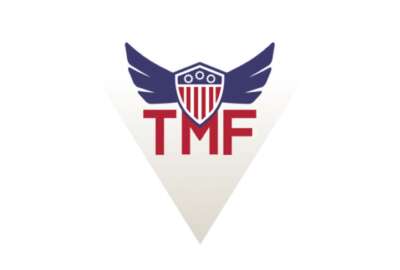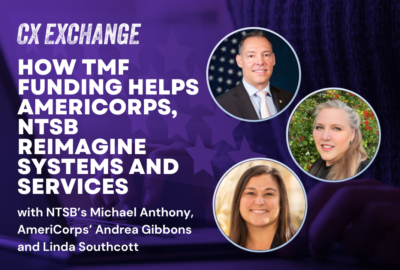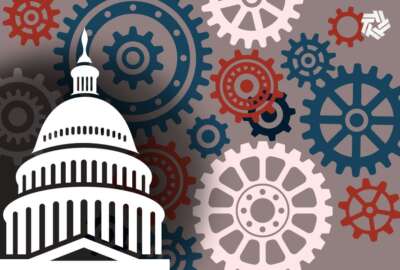TMF Board fine tunes criteria as funding becomes tighter
Larry Bafundo, the executive director of the TMF, said competitive proposals must include at least some repayment options and have measurable value.
The Technology Modernization Fund Board recently added two new permanent and one new alternate member to the decision making body.
The new technology leaders from the Postal Service, the Federal Reserve Board and the National Park Service join at a critical time for the IT modernization funding program.
Larry Bafundo, the executive director of the TMF, said with all of the $1 billion that the fund received under the American Rescue Plan Act awarded, the goal now is to set clear expectations around what the board is looking for and what makes a proposal competitive.

“Now is the time for the team to think about what is the right set of investments to be making, given the legislative intent of the program and what we’re seeing in terms of needs across the federal ecosystem. What are the things, from a best practices standpoint, agencies should be doing with this funding?” Bafundo said in an interview with Federal News Network. “The point of [our new competitive factors] is to be able to speak very plainly to the ecosystem and say, the TMF can be a really great vehicle for your modernization needs and here are some of the areas that we’re looking at and also this is what makes a competitive proposal in a post ARPA world.”
The board, which updated the competitive factors in September, is looking for agency proposals that meet some or all of the elements across seven areas, including competitive repayment terms of at least 50%, a continued focus on improving, retiring or replacing existing systems to enhance cybersecurity and privacy, and improve long-term efficiency and effectiveness, and demonstrating strong cross-organization executive sponsorship with the CFO, CIO and program leadership, and an empowered project leader who owns and will guide the effort.
“We want to see measurable value proposition from agencies around the changes that they’re looking to make, and we also have a preference for seeing agency structure proposals that lean on iterative and evidence driven approaches and that also show a commitment to the TMF processes, which includes being willing to talk about your work with the public and also identify and or share lessons learned or even software components that other agencies could use,” Bafundo said. “We think that the TMF is also a really unique community. We now manage over $1 billion of investments across 30 agencies. That’s not an insignificant cohort of the federal ecosystem. There’s a lot of data and insights that I think the TMF is uniquely positioned to identify and share with the broader ecosystem in terms of spending patterns, what’s working well, where agencies are seeing traction, and we’re really interested in this idea of how can we help agencies learn from each other?”
USPS, Federal Reserve Board added to board
That idea of learning from each other is part of what drove the addition of new members to the TMF Board. Earlier this month the board added Pritha Mehra, the chief information officer and executive vice president of the U.S. Postal Service, and Katherine Sickbert, the associate director for technology strategy and delivery for the Federal Reserve Board’s Monetary Affairs Division, as permanent members.
Matt Montaño, associate CIO for the National Park Service, is a new alternate member.
GSA said in the release that “these new people complement our existing members’ skills, creating a diverse governance team. Together, they ensure TMF investments deliver maximum value to government agencies and the American public.”
The board’s updated criteria comes as the amount of money in the fund is getting tighter, and it’s unclear how much support Congress will give in fiscal 2025.
House lawmakers zeroed out the Technology Modernization Fund and didn’t consider the Biden administration’s $200 million request.
The Senate, meanwhile, added $25 million for 2025, after not only zeroing out the TMF in 2024, but rescinding $100 million from it.
18% of TMF projects completed
A GSA spokesperson said in an email to Federal News Network that the revolving nature of TMF means that the precise amount of available funds vary frequently. But as of earlier this month, the fund manages more than $1 billion for 67 investments across 34 federal agencies. Of these investments, the board made 52 ARPA funding to address urgent IT modernization challenges.
“Our current available balance is $157 million, and incoming repayments mean that we expect to continue to invest between $180 million to $200 million in the coming few years,” the spokesperson said. “Despite significantly higher repayment amounts, the fund will be spent down over the coming decade without additional investment. Additional investment in TMF is crucial for the continued modernization of federal IT infrastructure and further supporting agency missions and national security objectives.”
Bafundo said only about 18% of all TMF board investments are considered complete so there still is a lot of money heading out the door over the next few years.
The board continues to see agency proposals around zero trust, moving to the cloud and around implementing artificial intelligence tools and capabilities.
“The TMF is setting like a clear bullseye for its next chapter in terms of the types of investments that we’re looking to make. I would describe that in terms of we really want to be funding and enabling organizational capabilities, not just funding IT projects,” Bafundo said. “We want to be helping agencies do things that enable them to deliver better technology outcomes, while also making it easier for them to be to change and sustain those systems long term. So ultimately, what we want to be able to support are more resilient and responsive organizations enabled by technology, not just necessarily better technology interfaces.”
He added the vast majority of funding awards have been for under $10 million. The board believes the “sweet spot” for many projects is under $25 million.
“There’s a couple of reasons for that. One is there is less funding available. But two is we want to fund things with a very high probability of success and impact,” Bafundo said. “Ideally, you’re doing that in a way where you’re working in shorter increments, where value is being delivered, and you can objectively assess it and respond to it. Generally speaking, the board is looking for things under $25 million, that can move forward in smaller, more tighter increments where value is being delivered and we can assess it and then decide from there what the next steps will be.”
Copyright © 2025 Federal News Network. All rights reserved. This website is not intended for users located within the European Economic Area.
Jason Miller is executive editor of Federal News Network and directs news coverage on the people, policy and programs of the federal government.
Follow @jmillerWFED






